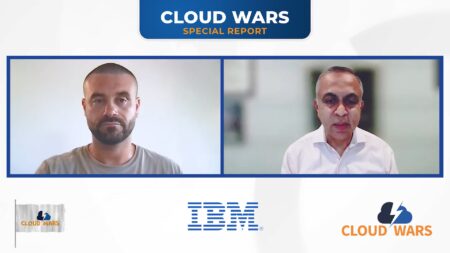
The best way to understand the benefits and challenges of a given technical architecture or platform is to ask the technology pros who rely on it to drive their businesses. That’s why independent research can be so valuable.
It’s not always about unearthing specific pain points around a particular platform. The best research uncovers trends and widely held viewpoints that can help determine the strengths and pitfalls of an entire approach.
In its latest research report, The State of Multi-Cloud, Cockroach Labs has done just that. The report concludes that integration is a major stumbling block for cloud architects and engineers operating in multi-cloud environments.
Major Pain Point
The report was commissioned by Cockroach Labs and carried out by Wakefield Research. In total, 300 cloud architects and engineers in the U.S., U.K., and Germany were surveyed. While three major cloud service providers — AWS, Google Cloud, and Microsoft — command the greatest market share, customers frequently opt for multi-cloud environments.
While this approach has many benefits, such as cost efficiency, the opportunity to benefit from best-of-breed technologies, and avoiding vendor lock-in, there are challenges, too. In the Cockroach Labs report, 37% of respondents cite a lack of integration and tools that work across multi-cloud environments as a significant challenge.
Ultimately, a large number of respondents stated that while there is a case to be made for multi-cloud architecture from a resilience perspective, the challenges of multi-cloud deployments make it hard to make this case from a technical standpoint.
Multi-Cloud and Hybrid Cloud Inroads
Despite these concerns, the report found that multi-cloud and hybrid environments are becoming the norm. In fact, 50% of respondents leverage multi-cloud services, and a further 26% benefit from hybrid environments.
According to the research, the strongest drivers of multi-cloud adoption are:
- Regulatory compliance
- Avoiding vendor lock-in
- Optimizing terms in cloud contract negotiations
Another important driver is the EU’s Digital Operational Resilience Act (DORA). In total, 38% of those surveyed said multi-cloud adoption was crucial in preparation for DORA. And, while 66% of respondents said an unpredictable economic climate is likely to increase multi-cloud adoption, 12% believed this could decrease or even stop the advancement of multi-cloud environments.
“When creating and executing a multi-cloud strategy, organizations need to consider everything from infrastructure costs and regulatory concerns to the need for cloud-specific specialists and tooling,” said Nate Stewart, Chief Product Officer at Cockroach Labs. “Despite this complexity, our data suggests that multi-cloud adoption will likely accelerate. As companies look to achieve the benefits of this approach, they should think through the full investment required to create and operate these environments.”
Closing Thoughts
The report not only details the critical drivers for the adoption of multi-cloud, but it also highlights the challenges associated with multi-cloud deployment.
Companies must weigh the costs, in time and money, of transitioning to multi-cloud and shouldn’t take the move lightly. While there are undoubtedly strategic benefits, it’s important to consider the underlying strategy and processes that will help make the transition smooth and ultimately resilient.









